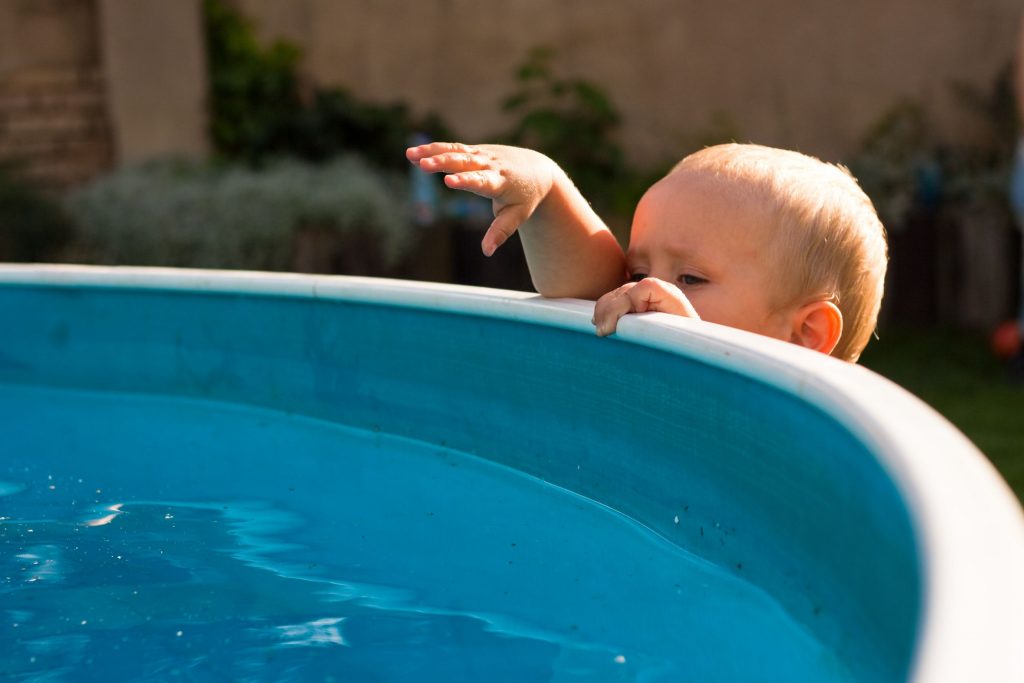
A pool is a great way to cool off during the summer, and can be a great activity for a family. However, there are certain risks of open bodies of water that you may not be aware of. The following article is intended to inform you of the dangers of large bodies of water and how to prevent potential drownings.
Risk Factors
There are about 3,500 drowning deaths each year, according to the Center for Disease Control and Prevention (CDC). Unfortunately, about one-fifth of these fatal drownings involve children under the age of 14. In fact, drowning is the second leading cause of death for children under the age of four. Furthermore, for every one child who dies, another five need emergency medical care for a near-fatal drowning.
Clearly, the danger of drowning is a large problem in the United States. Many drownings would have been prevented if the proper steps had been taken to ensure the safety of people around a pool or swimming hole. There are several factors that lead to an unsafe pool area. These include:
- Lack of barriers
In Oregon, California, and Arizona pool owners are required to place fencing around their pools. This is intended to prevent children from using a pool while unsupervised. In many cases, a child will not realize the danger of swimming in a pool unsupervised. - Lack of lifeguards or close supervision
Lack of supervision is dangerous for children. Drowning happens quickly and silently. Within a matter of minutes, a person can become unconscious, sustain severe brain injury, and die if submerged under water. It only takes about two inches of water for an unconscious person to drown. This means that parents and other people at the pool need to keep an eye on swimmers. If you have a small child at a pool, refrain from becoming distracted by talking to friends, reading a book or looking at you phone. Swimming with your child would be a wise choice. - Lack of swimming ability
A survey conducted by the Red Cross reported that only 56 percent of people could actually perform the five basic safety swimming techniques. Simply knowing how to swim properly could save your life. It would also be responsible to take your child to swimming lessons, and explain why it’s dangerous to swim alone. - Improperly designed pools and unkempt pool areas
Sometimes a pool will be built in such a way that will make it unreasonably dangerous. For example, older pool designs had a drainage vent at the bottom. This led to some people being suctioned to the bottom of a pool where they were trapped and drowned. Now, most pools have vent covers that will prevent people from being trapped at the bottom of a pool. Another example, is if the area around a pool is cluttered with stuff (chairs, towels, leaves, etc.) that makes it difficult to move around the pool area. If someone trips over this debris and falls into the pool, whoever was in responsible for maintaining the pool could be liable for the injuries sustained by the victim.
Additionally, the consumption of alcohol and lack of safety equipment like life vests, reach bars, and stairs out of the pool could increase the risk of drowning.
Impact of Drowning and Near-Drowning
Victims that have nearly drowned could face severe brain damage. This brain damage could result in memory problems, learning disabilities, and comas according to the CDC. The average financial cost for medical treatment after nearly drowning, according to the Foundation for Aquatic Injury Prevention, is $75,000 for initial treatments and emergency care. The cost for long term care after a near-drowning can be as much as $180,000 a year, and in the end may cost more than $4.5 million in medical bills. Every year, the total cost for drownings and near-drownings for children under the age of 15 is approximately $6.2 billion. Children under the age of five account for 61 percent of these costs.
Many cases of drownings and near-drownings could have been prevented, and may have been due to someone else’s negligence. If you believe that your child’s drowning-related injury is due to someone else’s actions or lack of action, you may be entitled to compensation. An experienced personal injury attorney can assess if you have a valid claim, and fight for your right to compensation if your claim is valid.



Leave a Comment